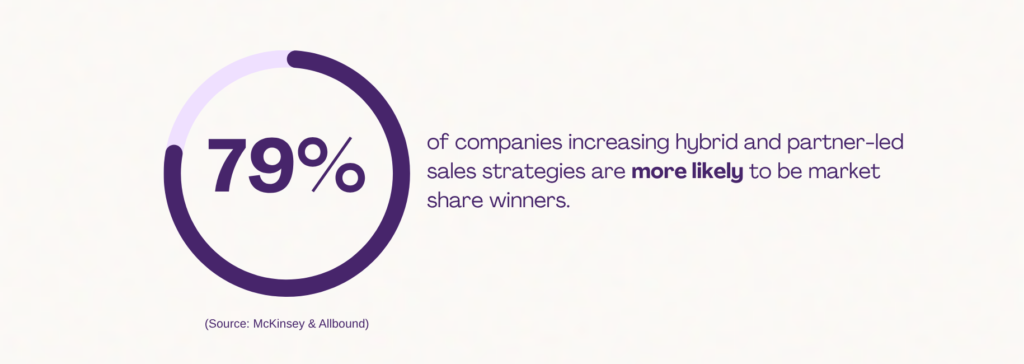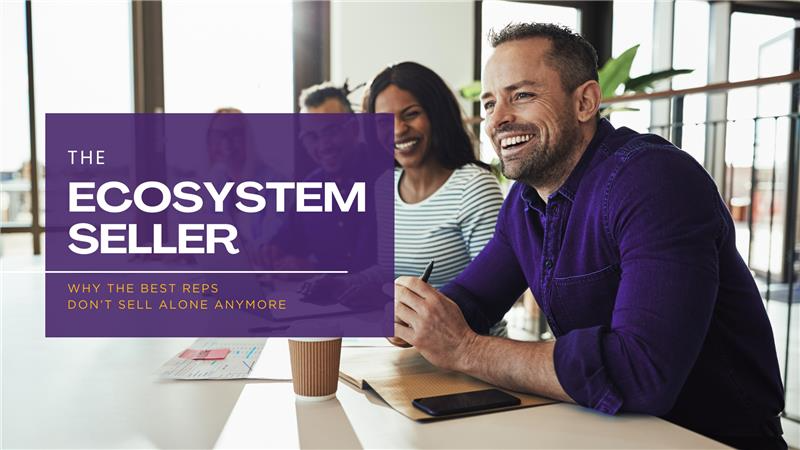en years ago, a high-performing rep was defined by their hustle, product knowledge, and a killer cold call. In 2025, that’s no longer enough.
The best reps today are not lone wolves—they’re ecosystem orchestrators. They know how to activate alliances, leverage adjacent vendors, and bring an entire revenue network into the room before the first discovery call.
We’re entering the era of the Ecosystem Seller, and it’s reshaping the DNA of modern go-to-market strategy.
The Old Playbook Is Fraying
The traditional sales model was built around ownership:
- Own the territory
- Own the list
- Own the customer
This model still has a place, but it’s being challenged on all sides by buyers who do their own research, partners who already have influence, and a tech stack that’s become more interdependent.
The truth is, no rep can own the entire buyer journey anymore. It’s not a failure of skill—it’s the nature of modern selling.
The New Reality: Sales Is a Team Sport
Today’s top reps don’t just sell. They assemble.
They work in tandem with:
- Partner Managers to identify co-sell opportunities
- Alliances Teams to activate shared customers
- Channel Reps to accelerate pipeline velocity
- Ecosystem Influencers (agencies, consultants, niche providers) who create momentum before the first meeting
Selling is now about who you can bring to the table, not just what you say once you’re there.
Ecosystem Selling: More Than Just Channel
Let’s be clear: this isn’t the same as a traditional channel play.
Channel often implies:
- Sell-through
- Tiered discounts
- Distribution leverage
Ecosystem selling is about:
- Co-sell motion (shared opportunity creation)
- Influence mapping (who already owns buyer trust?)
- Shared solutions (bundled offerings, integrations, and go-to-market plays)
The goal is no longer just reach—it’s relevance.
The Problem: Most Companies Aren’t Set Up for This
There’s a growing gap between companies that talk about partner-led growth and those that build for it.
Common issues include:
- No partner recruitment strategy
- Inconsistent onboarding or enablement
- Lack of performance tracking or attribution
- Over-reliance on one or two “hero” partners
It’s not a tooling issue. It’s a thinking issue. Most sales orgs still run on a rep-first, partner-later mindset — and it shows.
In short: the strategy exists on paper—but not in pipeline.
The Opportunity: Build the Ecosystem Engine
The winners are doing things differently. They are:
- Designing Partner Success Journeys like customer journeys
- Creating dedicated Partner Enablement roles
- Investing in Partner Ops to track attribution and revenue influence
- Incentivising reps for co-selling and partner activation
This shift isn’t theoretical. Companies investing here aren’t just seeing more partners, they’re unlocking faster sales cycles and higher win rates.


